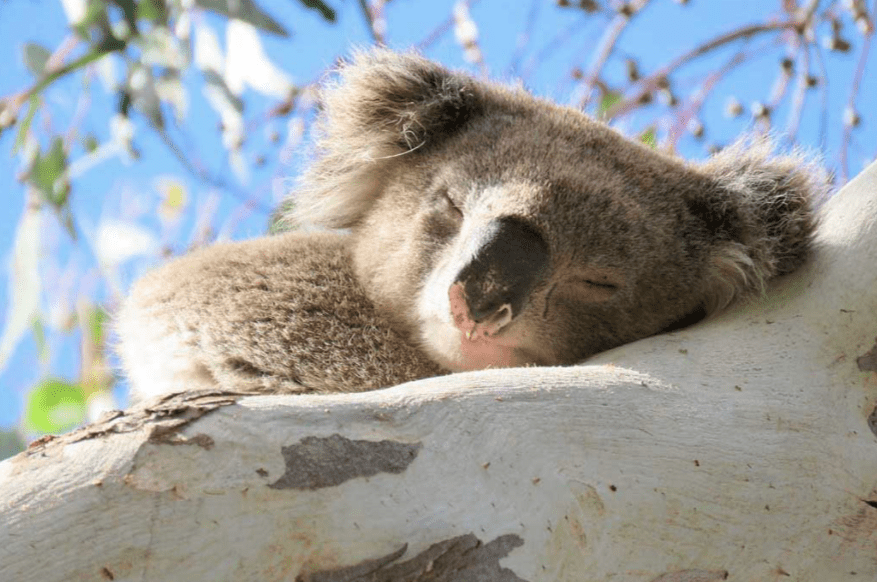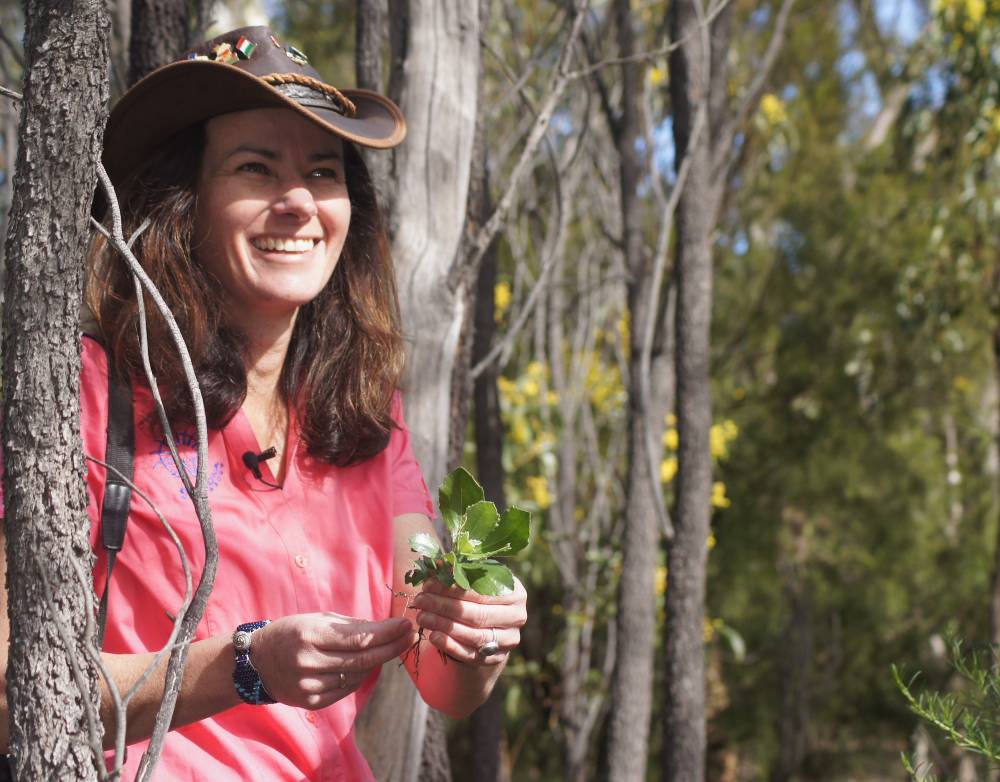Plant a tree, save a koala

The powerhouse behind Echidna Walkabout Nature Tours, Janine Duffy, credits her mate Scruffy with igniting her passion for and conservation of a humble Aussie icon, the koala.
“I met a koala, who I named Scruffy, in a picnic ground that we visited often, and after seeing him a few times, he became a highlight of my visits,” Janine says. “If I couldn’t find him at first, I would search until I did, and I realised that koala’s home ranges are much larger than I expected. I was also interested in his social life: did he have regular mates? I started reading books and scientific literature about koalas in the wild, and in the early 1990s there wasn’t a lot available. So, I started to write down what I observed. “
Janine’s observations of Scruffy and his mates over the ensuing years led her to a ground-breaking discovery.
“I knew Scruffy for seven years. When he died, I found him and I was devastated – though his death was natural and probably just old age. I missed him. I wanted to establish the bond I had with him with another koala, but the others in his area were less recognisable. So, I started looking for a way to tell them apart.
“I’ll never forget the day I saw it. I was looking at one koala I had called Big Boy, and just nearby was another koala: Eureka. I looked at ears, face shape, colour, spots, everything. Then I looked at the nose, and I saw it. Big Boy’s nose pattern was striking – lots of white. I ran over to Eureka, and his was totally different. Koalas can be identified by the patterns on their noses!”

Between 1992 and 2006, Janine’s research centred around koalas in the Brisbane Ranges near Melbourne and over the years became more and more detailed.
“I had a population of about 30 koalas I saw regularly. Then we had a fire. It was one of the first of the deadly, out-of-control, climate change fires. It started just near my koala research area. I watched from behind the road block as my beloved koalas faced the flames, and I couldn’t do a thing to help them.
“We lost all but three of our koalas that week – 90 per cent of the koala population was killed. Even 15 years later I still can’t write this without crying.
“I was miserable, but still had a business to run [Echidna Walkabout Nature Tours] and staff that needed work. So, we moved our tours to the You Yangs [a series of distinctive granite peaks that rise from the flat volcanic plains between Melbourne and Geelong, roughly 55km southwest of the Melbourne CBD]. On the first day, smoke still fogging the sky, I met a beautiful female koala with a tiny joey on her back. I named her Smoky, and her joey Pat. They were a symbol of a new beginning to me.
“Pat is still with us 15 years later. She had a joey we named Clancy, and it’s for him we named our not for profit: Koala Clancy Foundation.”

By 2020 Janine’s research was widely recognised, and being used for scientific publications. “Our discovery that koalas drink rain as it falls down the trunks of trees was written up into an important paper by the University of Sydney. My picture of Koala Pat licking a tree graced the cover of science journal Ethology, and was featured in The Guardian and Reuters worldwide.”
While the shocking megafires of Black Summer (2019/20) didn’t harm the You Yangs koalas, they killed many koalas in East Gippsland. “Our response to those fires was to accelerate our tree-planting programs, and include East Gippsland. We have now planted a total of 53,800 trees, and nearly 12,000 of those in East Gippsland this year.”
Following on from this monumental effort, Janine’s latest venture is to plant 300,000 trees by 2030.
“The You Yangs is a small range of dry hills surrounded by farmland. Approximately 100 koalas live there, but the trees are dying all around them. They’re dying from lack of moisture – it’s climate change, and it’s going to get worse. When trees die, koalas die.
“We realised that if we could just plant trees in wetter, more fertile areas around the You Yangs, the koalas would have somewhere to go. So we approached some farmers and they were enthusiastic.
“Every koala in the You Yangs needs about 3000 trees to live and 3000 trees multiplied by 100 koalas is 300,000 trees. I know these koalas personally. I won’t be happy until I’ve planted enough to save every single one of them.”

If you want to get to meet and get to know the koalas of the You Yangs, just like Janine does, there’s no better way to connect with them than by connecting with the people who are dedicated to them. “Wildlife guides and researchers know things about the animals that you can’t read in a book – only years of experience gives you this depth. On a guided tour, you get a leg-up – a special perspective – on the animals, plants or landscapes you are there to see.
You can join Janine on upcoming special departures with Australian Geographic Travel to Raymond Island, East Gippsland and the You Yangs.




